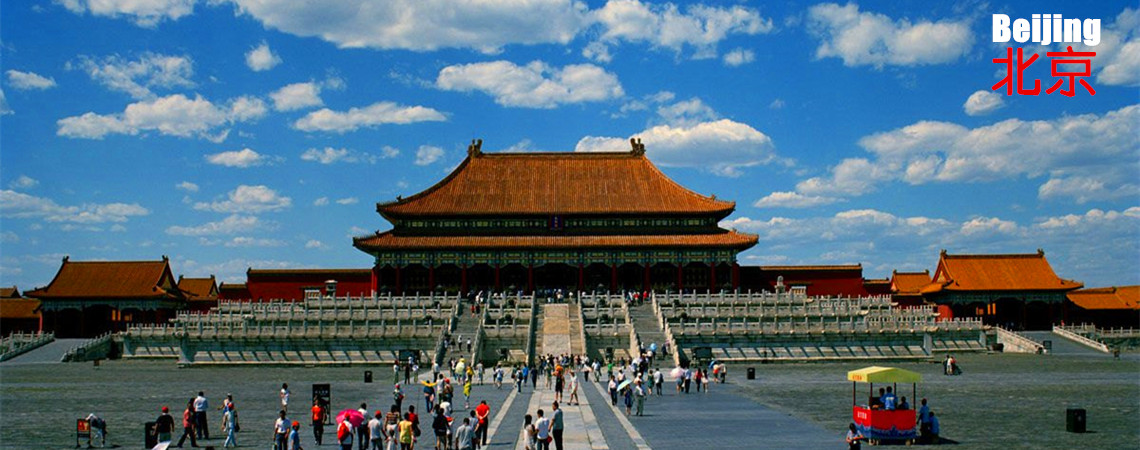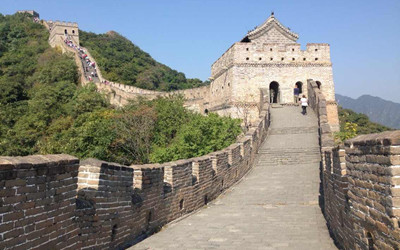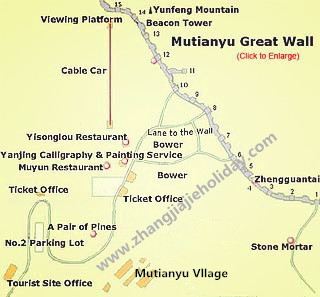
Beijing Mutianyu Great Wall
 at Badaling. The Mutianyu section, 2,500 meters (2,734 yards) long, connects the Juyongguan Pass in the west and Gubeikou in the east. Rimmed by mountains, it is filled with beautiful flowers in spring; abundantly verdant in summer; charming with red-leafed maple trees in autumn and enchanting covered in pure white snow in winter.
at Badaling. The Mutianyu section, 2,500 meters (2,734 yards) long, connects the Juyongguan Pass in the west and Gubeikou in the east. Rimmed by mountains, it is filled with beautiful flowers in spring; abundantly verdant in summer; charming with red-leafed maple trees in autumn and enchanting covered in pure white snow in winter.
History of the Mutianyu Great Wall
The wall was reconstructed during the early Ming Dynasty (1368-1644) on the ruins of the wall built during the Northern Qi Dynasty (550-557). Hence, the wall has a history of over 1400 years. In 1404, the Mutianyu Pass was added to the wall and in 1569 it was restored again. This fortified section was the site of many battles which took place during the Ming Dynasty.
What to see?
 The wall, which stands seven to eight meters (23-26 feet) high and four to five meters (13-16 feet) wide, is mainly made of slabs of granite, which make it extremely strong.The Mutianyu section has its own characteristics.
The wall, which stands seven to eight meters (23-26 feet) high and four to five meters (13-16 feet) wide, is mainly made of slabs of granite, which make it extremely strong.The Mutianyu section has its own characteristics.
The coping on both sides of the wall has parapets and battlements, which made it possible to repel foes from either side. The bases of the indented battlements have square holes arched at the top from which soldiers shot at the besiegers. Additional walls with watchtowers were built in order to relieve the enemy's assault on the main wall which is densely distributed with watchtowers, twenty-two in total. The wall runs up and down following the contours of the steep mountainsides. In one section it rises with a gradient of nearly 90 degrees on bare rock posing a challenge to any climbers. In Zhengguantai, three watchtowers stand on the same terrace, a rare occurrence in the structure of the Great Wall.
Travel Tips
Add: Huairou Dtrict of Beijing City
Entrance Fee: CNY 60
Opening Hours: 07:00-18:00
Transport: Bus No. 916
Notice: Comfortable cable cars are available to facilitate climbing this section of the wall. A single trip cost CNY50 and a round trip enjoys a favorable price at CNY80






 Ask Questions ?
Ask Questions ?